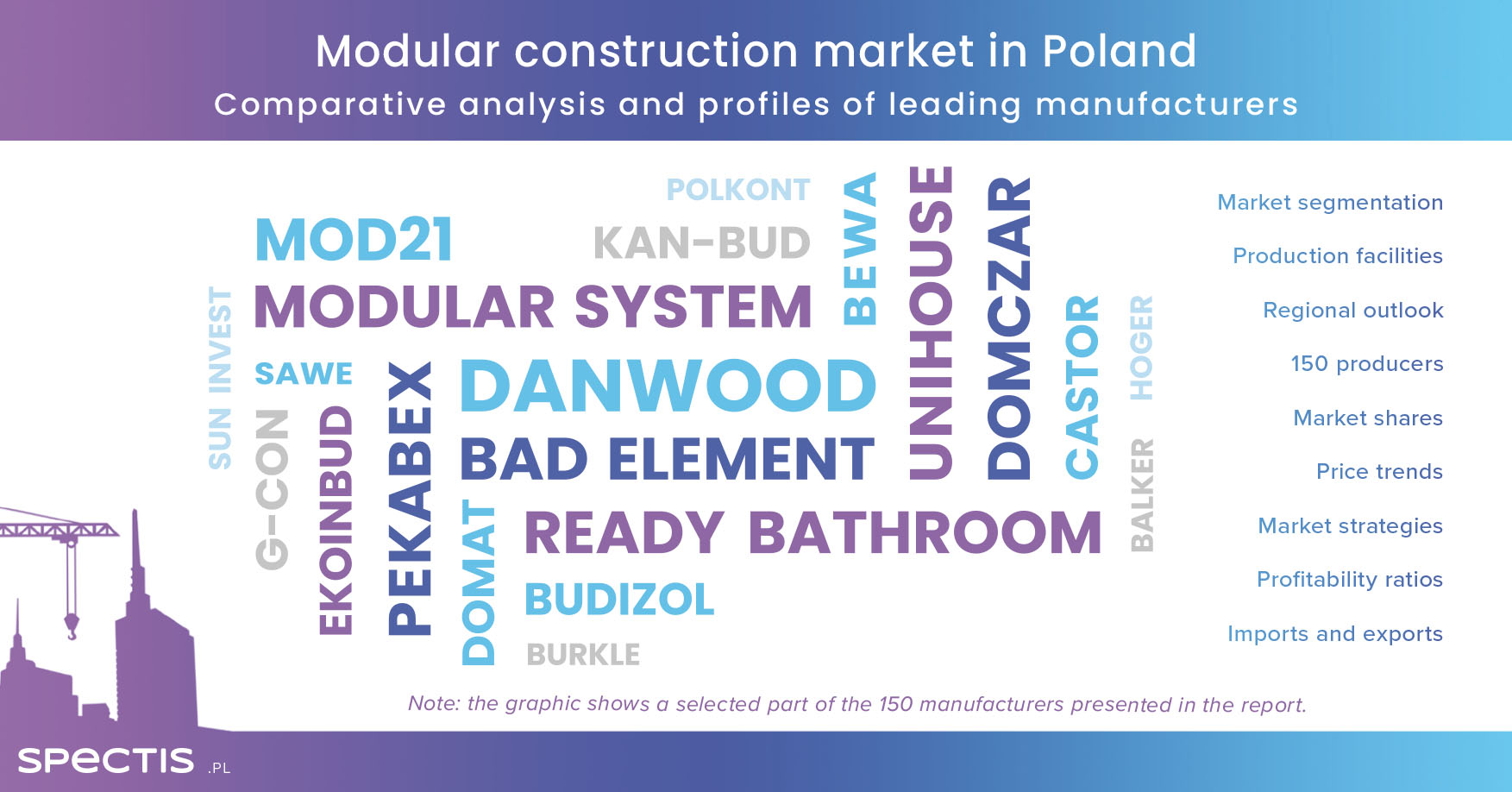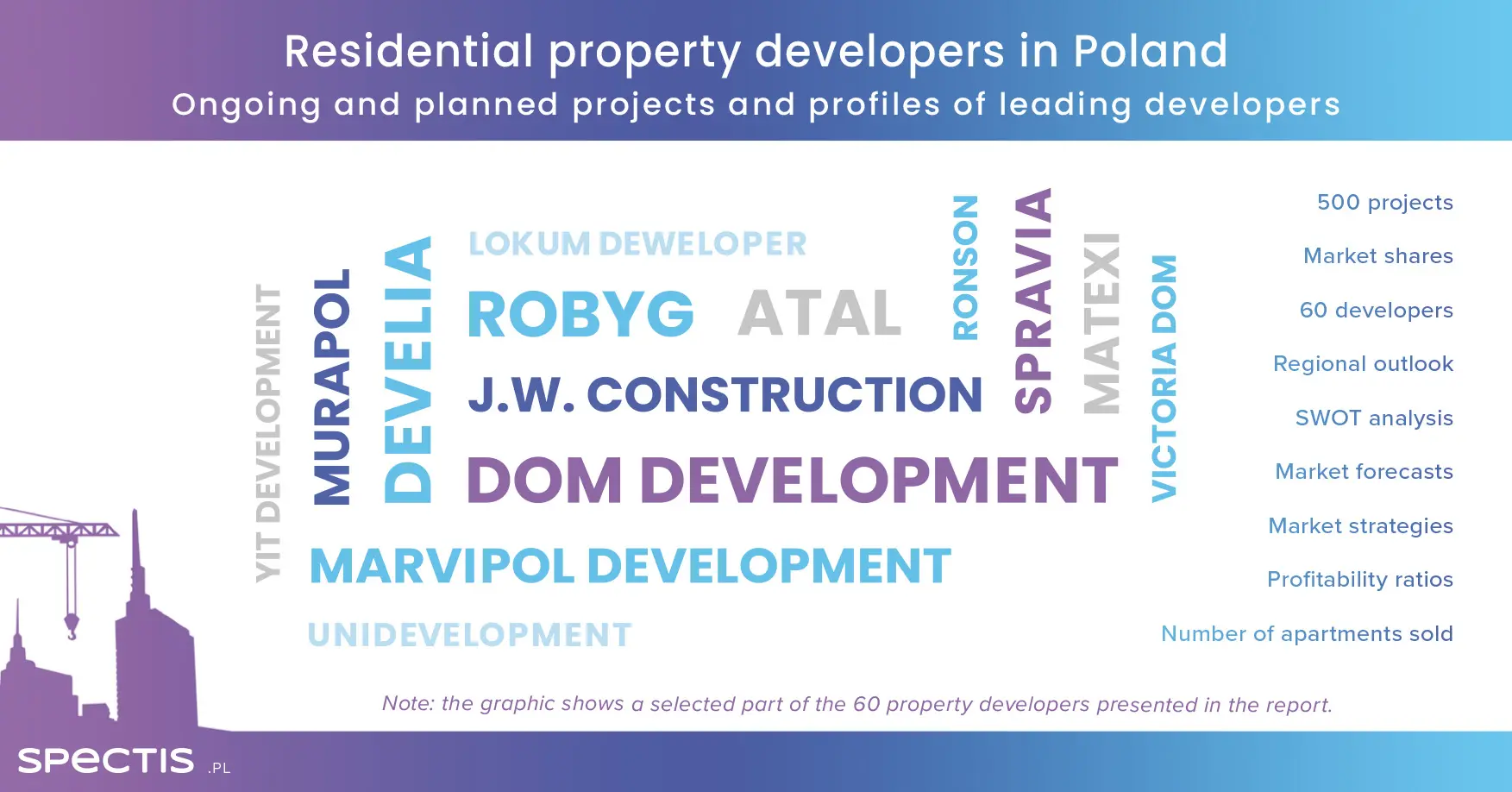The Polish modular construction market is shaped by two dominant technologies - concrete and timber prefabrication. Alongside these leading segments, the steel-frame modular construction sector continues to grow, though it remains noticeably smaller in scale. From a materials perspective, the market is further complemented by lightweight expanded clay aggregate (LECA) wall technology. The main distinctions between the three core technologies lie in how the components are delivered to the construction site and the methods of assembly.
For broader project context, see our project showcase: Modular construction in Poland – a review of standout projects.
In concrete prefabrication, the dominant method is 2D construction (i.e. walls, ceilings, staircases, balconies and other elements assembled on site). The main exception to this rule are modular bathrooms, which are manufactured using 3D modelling. Similarly, 2D production methods prevail in timber prefabrication. In contrast, steel-frame modular buildings are more often based on advanced 3D prefabrication involving ready-made modules. We expect the 3D prefabrication segment to gradually gain traction, particularly in the case of smaller-scale developments.

Growing popularity of complex concrete prefabrication
The coming years are likely to see a renewed interest in complex concrete prefabrication in the residential sector - particularly involving precast concrete walls. While the use of precast staircases, balconies and ceilings has been standard practice among a growing number of multi-family housing developers for years, an increasing share of investors are now opting for fully prefabricated solutions, including wall systems assembled on site. This trend is largely driven by the successful delivery of an expanding number of projects built using this approach.
For insights on market size and growth dynamics, see our post: The value of Poland’s modular construction market.
.jpg)
Modular construction sector open to innovation
The past five years have seen significant technological progress across the modular and prefabricated construction industry. The implementation of innovations such as Building Information Modelling (BIM), production process automation, advanced material applications, and 3D printing has led to a growing number of investors selecting modular technologies. As technological advancement continues, innovation in this sector is expected to intensify, further shortening construction timelines.
In recent years, BIM solutions have become a standard component of modular construction, enabling improved coordination between design and execution teams, enhanced process optimisation, and reduced risk of errors during the production stage.
Modern modular construction projects place strong emphasis on sustainable development. The use of eco-friendly materials, energy-efficient systems and low-impact technologies is increasingly important to clients. At the same time, prefabrication plants are increasingly pursuing green building certification - in part due to evolving EU regulatory requirements.
The modular construction industry is also highly receptive to innovation such as 3D printing. While still relatively new to the broader domestic construction market, 3D printing is becoming more prevalent in modular construction, supporting fast production of structural components while reducing both lead times and costs.
Notably, modular and prefabricated construction is highly adaptable in terms of design. It is easy to adjust a building layout to match changing client needs by adding or removing modules. Hybrid projects - combining modular and traditional construction - are also becoming increasingly common.
For complete market background, supply structure, and forecasts, see our latest report: Modular construction in Poland – industry report.
New application areas for modular technologies
As technology develops and 3D prefabrication capabilities grow, modular construction is gaining traction across specialist sectors. An increasing number of companies in Poland recognise the value of modularity not only in residential or commercial building but also in areas where precision engineering and infrastructure mobility are critical.
Container buildings for healthcare
In recent years, Poland’s modular construction market has seen the rollout of container buildings designed for healthcare applications. These modular units are increasingly used as mobile diagnostic labs, such as MRI facilities. Their key advantages include rapid installation, factory-based turnkey equipment integration, and the ability to deliver a fully operational facility in a short timeframe. Medical container units are built to strict standards for acoustic, electromagnetic, and sanitary insulation. Their modular form allows for easy relocation, expansion, or integration with existing hospital infrastructure. As such, they present an attractive alternative to conventional healthcare investments - especially in scenarios where time and flexibility are of the essence.

Modular data centres
To meet rising demand for fast and flexible infrastructure solutions, more companies are now offering dedicated modules for the construction of data centres. These solutions significantly shorten investment timelines and enable phased development in line with user needs. Further benefits include high repeatability of quality, easier compliance with safety standards, and the ability to achieve high energy efficiency. For these reasons, modular data centres are an increasingly popular option for cloud operators, financial institutions, and businesses that require reliable IT infrastructure.

Modular solutions for the defence sector
Modular construction technologies are also seeing wider uptake in the defence sector. In response to the growing demand for mobile and easily scalable infrastructure, more companies operating in Poland are expanding their offer with high-durability modular facilities designed to perform in harsh environmental conditions. These structures are used as logistics hubs, command centres, medical posts or mobile server rooms. Thanks to modern integrated technologies - including energy, communications and protective systems - modular military solutions enable rapid deployment of infrastructure wherever it is needed.

To learn more or download a report sample, visit our shop:


